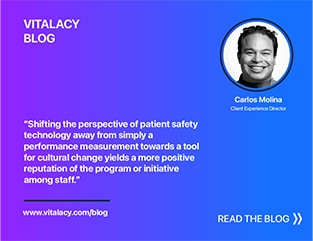Here’s how hospitals across the country are encouraging hand hygiene with handwashing signs:
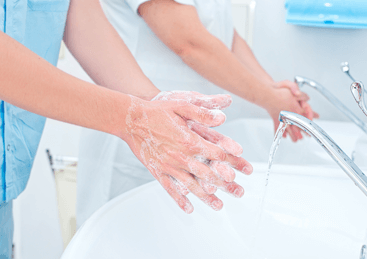
It’s probably not a stretch to say that raising hand hygiene compliance rates to 100% is the Holy Grail of every infection control director at every hospital in the United States. Unfortunately, Becker’s Hospital Review reports that compliance rates at US hospitals tend to hover around 40%.
The reasons vary from heavy patient loads to a lack of awareness about the problem. So, how can hospitals encourage healthcare workers to follow handwashing protocols every time and reduce hospital-acquired infections?
Creative educational campaigns are one answer. Here are 5 hospital handwashing posters that have brought compliance to the next level:
1. The Screensaver That Saved
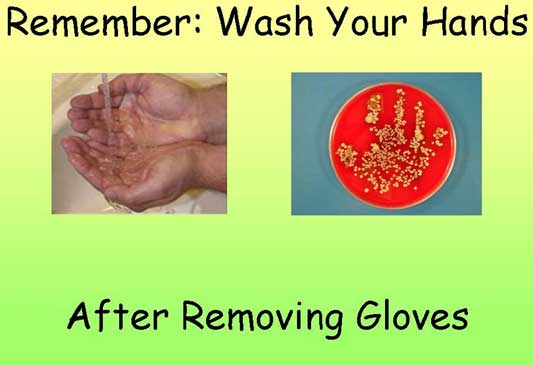
When it comes to hand hygiene in hospitals, a picture may be worth more words than are in the dictionary.
Cedars-Sinai Medical Center in Los Angeles learned this as they aimed to improve their handwashing compliance rate. They started with a “Hand Hygiene Safety Posse,” which walked around the wards and gave out prizes to physicians using proper hand hygiene. While it was successful — the hospital went from 65% compliance to 80% — it wasn’t enough.
The hospital’s epidemiologist, Rehka Murthy, decided to try an experiment. She asked the physicians to give her a hand culture after lunch one day. The results showed massive colonies of bacteria on their hands.
The picture was made into a poster, which was also displayed on every hospital computer. The disgusting image worked — compliance rates shot up to almost 100%, and have remained that way ever since.Source: The New York Times (September 2006)
2. A Punny Poster

In Lexington, Kentucky, St. Joseph Hospital reminded employees to wash their hands with a message close to home: their own boss.
The poster features the hospital’s CEO making a cringe-worthy but clever pun. The combination of using one of their own, as well as a little bit of humor, lowers any potential defensiveness and makes the message memorable.Sources: The Joint Commission (2009), The New York Times (September 2006)
3. Got Soap?
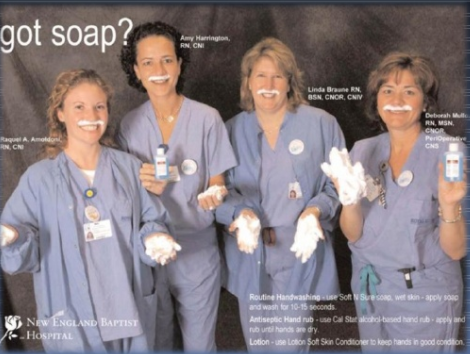
New England Baptist Hospital in Boston took a very similar approach to St. Joseph’s. Their posters used their own nurses and physicians donning soap mustaches in an homage to the popular “Got Milk?” campaign.
The hospital also aimed to educate employees about the benefits of alcohol-based handwashes. They took cultures from hospital cafeteria cashiers before and after using an alcohol-based wash, and found a significant reduction in bacterial contamination with the use of the wash.
New England Baptist ended up installing alcohol-based handwash in all operating rooms, hospital rooms, and other departments throughout the hospital to remind the staff to keep washing.Source: American Journal of Infection Control (May 2004), Maureen Spencer (New England Baptist Hospital, October 2010)
4. Let’s Give Them A Hand
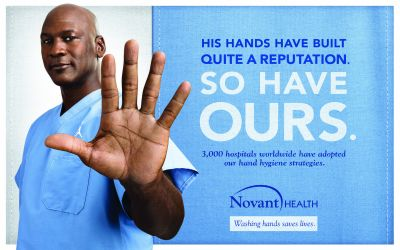
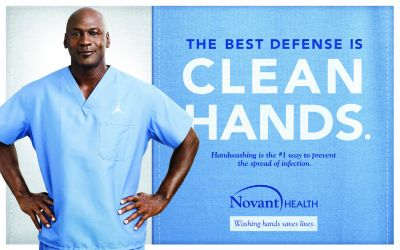
In 2008, Novant Health won the Joint Commission’s Ernest Amory Codman Award for its hand hygiene program, “Washing Hands Saves Lives.” They used several strategies, including sharing compliance data with the staff, emphasizing that handwashing saves lives, using compliance-based monitors, and encouraging alcohol-based handwash use. The campaign proved highly successful — handwashing compliance rates jumped from 49% in 2004 to 98% in 2008. There was also a 40% reduction in Methicillin Resistant Staphylococcus Aureus (MRSA) infections.
A few years later, Novant took their campaign a step further in order to keep it fresh on everyone’s minds. They enlisted the help of basketball star Michael Jordan, who is known partially for his large hands.
Jordan appeared on posters and screensavers in the hospital, reminding workers that just like him, the hospital has built a stellar reputation for its hands.Sources: The Joint Commission (2008), Infection Control Today (August 2012)
5. We’re Counting On It
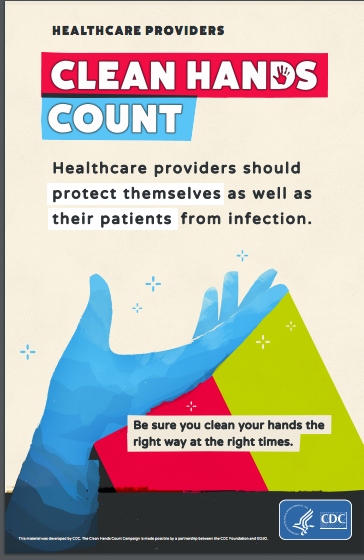
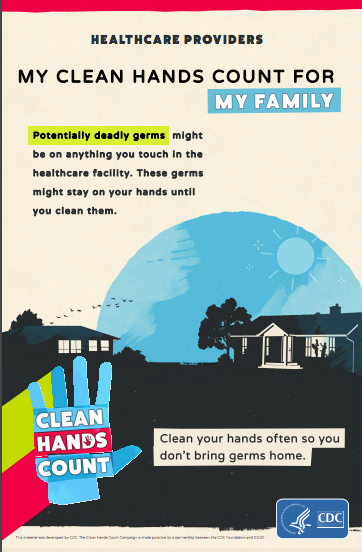
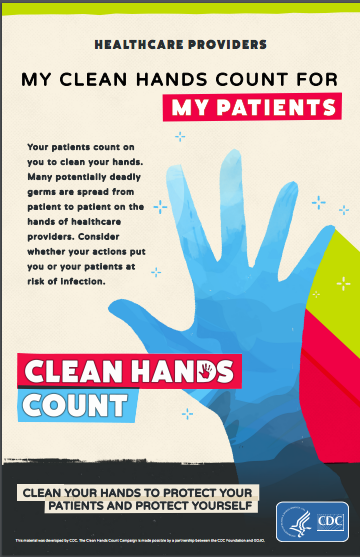
It’s tempting for healthcare workers to believe that washing hands most of the time — as opposed to 100% of the time — is good enough. The Centers for Disease Control and Prevention (CDC)’s “Clean Hands Count” campaign reminds them otherwise.
The campaign launched in 2016 as a way to educate healthcare professionals about the importance of handwashing. It focuses on the fact that anyone in the hospital can carry germs, and that spreading germs can have long-lasting personal effects.
For example, one poster emphasizes that a failure to wash hands could mean bringing germs home to your whole family. Another reiterates that patients count on hospital staff — putting responsibility on the healthcare workers.
The campaign also aims to dispel myths — like the one that alcohol-based sanitizers are actually harmful — that may keep people from washing their hands. The Clean Hands Count materials are available for any hospital to use. Promotional materials, brochures, and infographics can be downloaded online, or hospitals can order free printed copies. Sources: The New York Times (September 2006), The Centers for DiseaseControl and Prevention (May 2016; March 2016)
Looking for other innovative ways to boost the hand washing compliance rate at your hospital? Vitalacy can help. Learn more about our technology-based solutions.
Request a demo of Vitalacy’s Automated Hand Hygiene Monitoring Solution today!
Author
-

Vitalacy is committed to reducing patient harm in healthcare through better hand hygiene and patient safety solutions. Bluetooth-enabled smart sensors and wearables help improve outcomes and Leapfrog Hospital Safety Grades.

